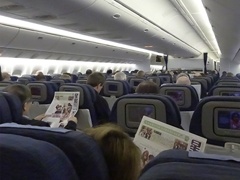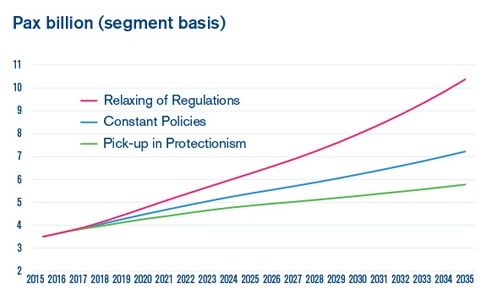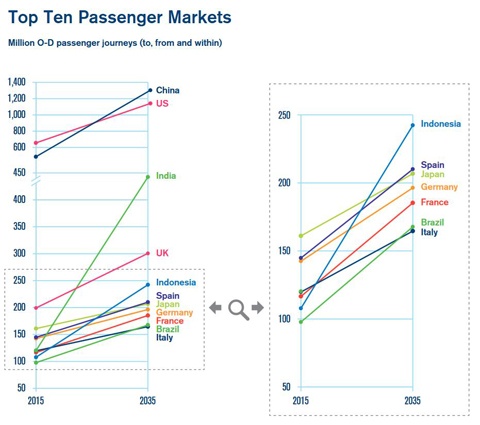 By the end of 2016, over 3.7 billion passengers will travel this year. According to the International Air Transport Association (IATA), forecasts for 2035 will nearly double at 7.2 billion air passengers travelling in a single year.
By the end of 2016, over 3.7 billion passengers will travel this year. According to the International Air Transport Association (IATA), forecasts for 2035 will nearly double at 7.2 billion air passengers travelling in a single year.
The biggest driver of air travel demand is expected to be the Asia-Pacific region whereby more than half of aviation’s new passengers will come from over the next 20 years. A key concern for the aviation industry is that the region’s current infrastructure will not be able to keep pace with the forecasted passenger growth. In fact, some runways and airport terminals in the region are approaching capacity limits or already over capacity. Any plans for building new airport infrastructures must happen soon.
The 20-Year Air Passenger Forecast
IATA’s 20-Year Air Passenger Forecast analyzes fundamental drivers of air travel to identify future traffic trends. Passenger demand is forecasted by examining factors such as:
- The emerging middle class in developing countries
- Diverging demographic outlooks
- Further liberalization of aviation markets
- Climate change
The forecast report presents three scenarios. Its central prediction of doubled passengers for 2035 is based on a 3.7% annual Compound Average Growth Rate (CAGR). Depending on what’s to come in the next 20 years, trade liberalization could triple the amount of passengers whereas trade protectionism could slow down growth to 5.8 billion passengers (2.5% annual CAGR).

The Top Five Fastest-Growing Markets
In terms of additional passengers per year over the forecast period, the five fastest-growing markets will be:
- China (817 million new passengers for a total of 1.3 billion)
- US (484 million new passengers for a total of 1.1 billion)
- India (322 million new passengers for a total of 442 million)
- Indonesia (135 million new passengers for a total of 242 million)
- Vietnam (112 million new passengers for a total of 150 million)
The Asia-Pacific Region
By 2035, China is expected to overtake the US as the world’s largest aviation market for traffic to, from, and within the country. India is expected to surpass the UK to take #3 on the list. Indonesia will enter the top ten as Italy is pushed out.

As it stands, infrastructure within the Asia-Pacific region is already struggling to keep up with demand. Asia’s main hubs are already limited in capacity despite being among the largest in the world. Beijing Capital reached terminal capacity in 2013 and is expected to max out its runways by 2019. Hong Kong international airport has reached terminal capacity and is expected to use all of its runway space by the end of the year. Mumbai airport is projected to reach capacity limits by 2018 and New Delhi by 2021. Singapore Changi airport will have adequate terminal capacity, but runway capacity may be reached in 2018.
Future Expansion Planning & Conclusion
Planning for the future requires cooperation among industry, governments, and communities. There are many elements that need to grow with rising demand - aircraft fleets, runways, terminals, baggage systems, security, workforce, and training to name a few. The Asia-Pacific region must aggressively plan and build for the future right now in order to stay ahead of projected aviation growth. Falling any further behind will leave a great deal of demand unfulfilled.
Sources:
http://www.iata.org/pressroom/pr/Pages/2016-10-18-02.aspx
http://www.iata.org/policy/promoting-aviation/Documents/intervistas-report-aspac-dec2015.pdf
http://www.iata.org/policy/promoting-aviation/pages/index.aspx